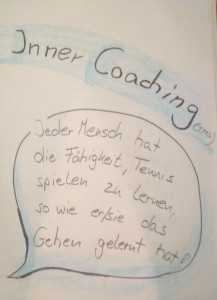
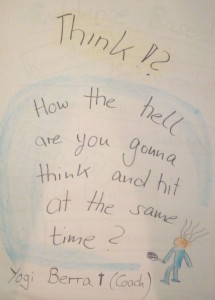
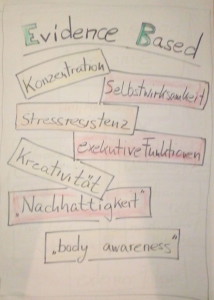
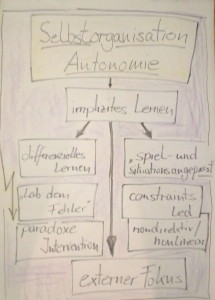
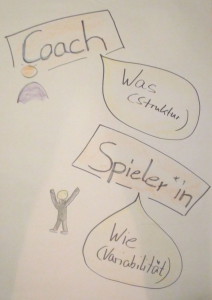
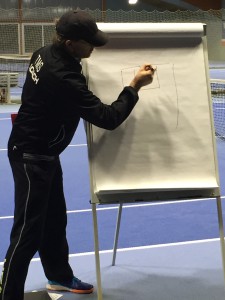






 Für den Samstag abend hatte WTB-Bezirkstrainer Matthias Martin zum TC Tübingen zu einem Austausch unter hauptamtlichen und interessierten Trainer*innen geladen. Themen waren „Brain-Game-Tennis“ und „INNER COACHING (TMS)“.
Für den Samstag abend hatte WTB-Bezirkstrainer Matthias Martin zum TC Tübingen zu einem Austausch unter hauptamtlichen und interessierten Trainer*innen geladen. Themen waren „Brain-Game-Tennis“ und „INNER COACHING (TMS)“.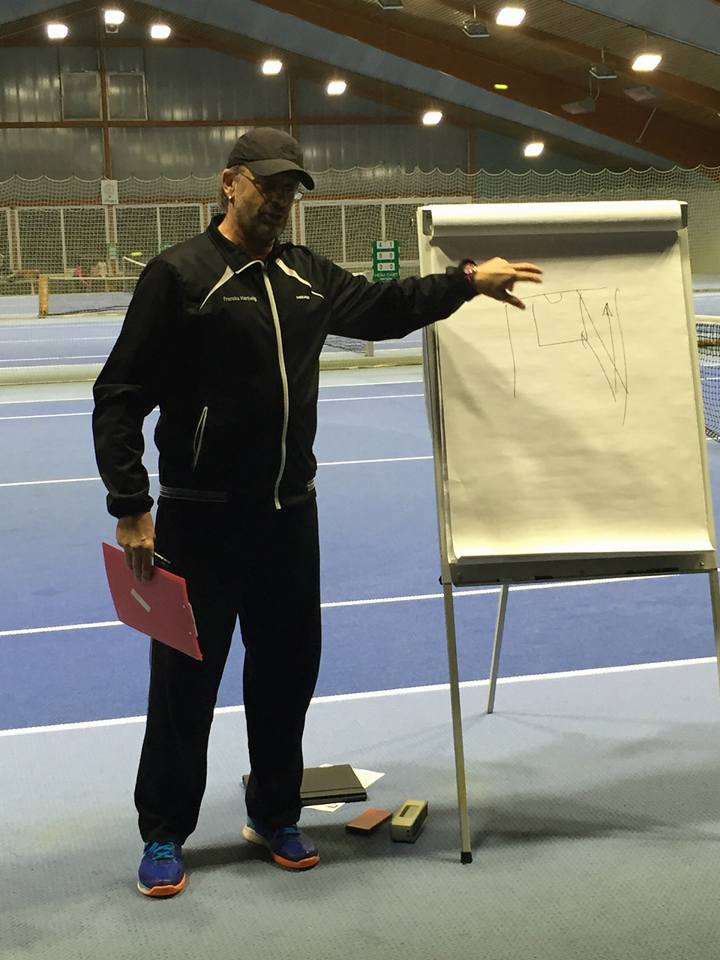
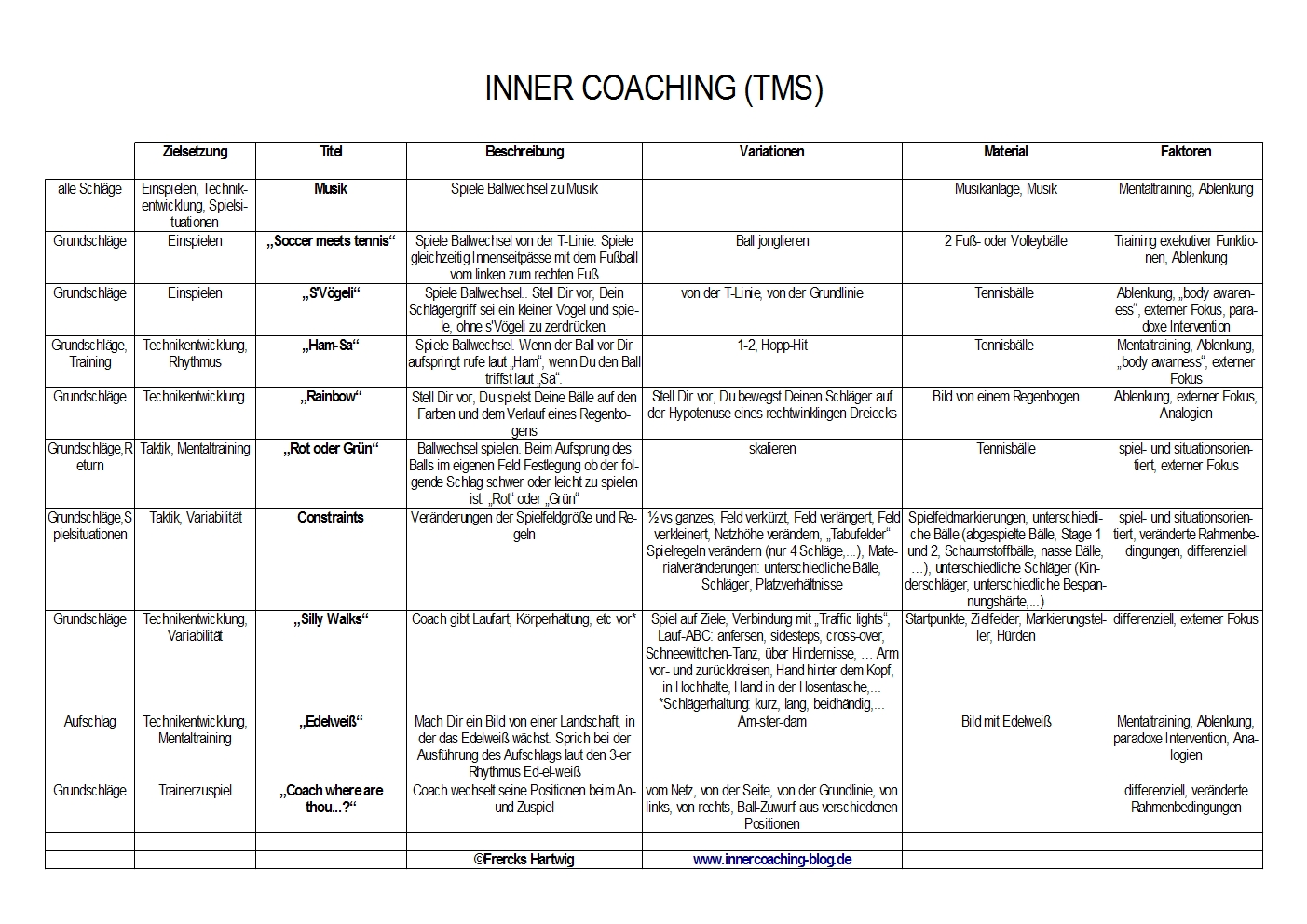 TMS Coach Frercks Hartwig beschrieb die Prinzipien des INNER COACHING (TMS) und zeigte mehrere Drills in der Praxis.
TMS Coach Frercks Hartwig beschrieb die Prinzipien des INNER COACHING (TMS) und zeigte mehrere Drills in der Praxis.
Viele Spieler*innen haben im Laufe ihrer Sozialisation das Gefühl für die Wahrnehmung ihrer Körperbewegungen verloren. Sie sind angewiesen auf das Lehrer*innen-Feedback und auch die Benotung von körperlichen Leistungen in der Schule macht sie zusätzlich von Rückmeldungen und Bewertungen abhängig.
Die häufigste Frage im Training mit Spieler*innen die wenig Erfahrungen mit und wenig Vertrauen in ihre Selbstorganisationsfähigkeit haben ist deshalb: „Coach, sag mir doch, was ich falsch mache und wie es richtig geht.“ Body awareness and scaling weiterlesen
Constraints led coaching and differencial learning needs changing situations. The most common situation in a coaching drill is that the coach ist playing the ball in. Some coaches seem to be fixed to their places. We can use the cue for a lot of differencial situations.
Sometimes it takes only a little bit of imagination to develop new drills that satisfy the requirements of an „evidence based coaching“.
Or how Holger Geschwindner would say: „Practised nonsense“!
In every course for future coaches, they are instructed to think about their position from where to hit or toss the ball into play. As a rulle, it is to start the rally with a proper gaming face-off and the rest are „no go“ positions, corresponding to textbook positions.
The so-called „spanish drills“, where coaches work with the ball-toss from most diverse positions, already suggests that there are other ways. This was always differential, and was practiced without the, at that time not yet available scientific background.
This drill „Coach where are thou?“ shows some of the possible positions from where the coach can bring the ball into play in many different ways or from many different positions.
Manchmal braucht es nur ein bißchen Phantasie, neue Drills zu entwickeln, die den Voraussetzungen eines „evidence based coachings“ genügen.
Oder wie Holger Geschwindner sagen würde: „Praktizierter Unfug“!
Eine solche Idee ist der Drill, der eigentlich aus einer ganzen „Batterie“ von Drills besteht.
In jeder Trainer-Ausbildung werden die zukünftigen Coaches angeleitet, sich über die Position beim Anspiel Gedanken zu machen. In der Regel geht es dann darum, den Ballwechsel mit einem spielgerechten Anspiel zu beginnen und es gibt vermeintliche „no go“-Positionen und dem Lehrbuch entsprechende Trainerpositionen für das Anspiel.
In den sogenannten „spanish drills“, bei denen sehr viel mit dem Zuwurf von Bällen aus den unterschiedlichsten Positionen gearbeitet wird, deutet sich schon an, dass es auch andere Wege gibt. Hier wurde schon immer differenziell, auch ohne den damals noch nicht vorhandenen wissenschaftlichen Hintergrund gearbeitet.
Der folgende Darstellung des Drills „Coach where are thou?“ zeigt nur einige der möglichen Positionen, von denen der Coach den Ball auf die unterschiedlichste Weise anwerfen oder einspielen kann.
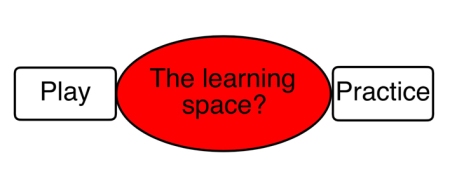 Very interesting comment about constraints led coaching in soccer with some nice examples about changing rules and environment:
Very interesting comment about constraints led coaching in soccer with some nice examples about changing rules and environment:“The best decision-makers in sport adapt their decisions and actions to a changing environment, and perform in unstable or uncertain situations. Coaches need to emphasise adaptability and variability in training, rather than the traditional approach that focuses mainly on repetition and stability of athlete decisions and actions”. (Richard Shuttleworth)
Von Holger Geschwindner haben wir schon erzählt. Er ist der Jugendcoach von Dirk Nowitzki. Die Süddeutsche berichtet über einen Vortrag des Ausnahmetrainers vor Münchner Student*innen.
Wie immer sind seine Trainingsmethoden paradox, differenziell, implizit, spielerisch und ganzheitlich. Das gefällt uns 😉 .
Zum Nachlesen: Süddeutsche
Ash Smith describes in this article, how the effects of pressure on performance and how the natural defence mechanism of our bodies can lead into “mind blindness” and consequently to making poor decisions. And you can find some very nice examples for differencial and implicit learning!
„In a constraints led model the coach will design practice so that the task contains a specific constraint, or so that the performer themselves is constrained in some way (physically or cognitively). The constraint being such that it guides the performer towards the desired change of movement pattern or behaviour. This approach has the benefit of helping the performer develop feel for the change from their own experiences and as such internalise it more effectively – thus accelerating the speed of skill acquisition.“ (Ash Smith: Comfortable with being uncomfortable?)
Leserbrief
In der aktuellen Ausgabe der Fachzeitschrift „TennisSport 3/2015“ finden sich zwei unterschiedliche Einschätzungen des differenziellen Lernens nach Schöllhorn: Freddy Siegenthaler, ehemaliger Swiss Tennis Stützpunkttrainer empfiehlt das differenzielle Lernen (nach Schöllhorn) bei der Entwicklung und Verbesserung des 1. Aufschlags im Tennis (S. 3). Im gleichen Heft kritisiert Alexander Ferrauti das differenzielle Lernen als wenig Erfolg versprechend. Die praktischen Unterrichtserfahrungen widersprechen ihrer Ansicht nach „eindeutig den Axiomen des differenziellen Lernmodells“ (S. 22) Leserbrief weiterlesen